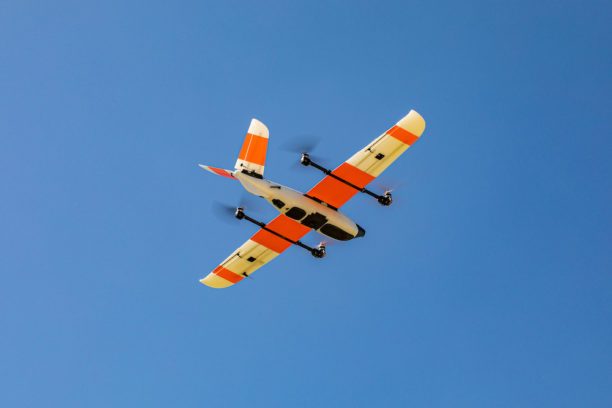Michigan joins forces with industry and research to establish a regional drone services operations center
A major public-private effort is underway in Michigan’s Upper Peninsula to advance drone-based mobility and airspace management. The region near the Canadian border will become a launch point for scalable commercial and security drone operations.


Setting the Stage
In a project funded by the Michigan Office of Future Mobility and Electrification (OFME) via the Michigan Mobility Funding Platform (MMFP), a regional Operations Center will be created in Chippewa County. This facility will support near-border drone operations with real-time situational awareness and FAA-authorized traffic coordination services.
The initiative is led by ANRA Technologies in collaboration with the Chippewa County Economic Development Corporation (CCEDC), Censys Technologies and the Michigan Tech Research Institute (MTRI). It aims to create a testbed for private- and public-sector Uncrewed Aircraft System (UAS) deployment across Michigan.
“This project exemplifies Michigan’s commitment to leading the future of advanced air mobility by building the foundation for a scalable drone ecosystem for the Upper Peninsula,” said Justine Johnson, Michigan Chief Mobility Officer at the Michigan Economic Development Corporation. “Through public-private partnerships such as this, we are igniting a catalyst for innovation that will drive long-term growth in a transformative sector—benefiting both public services and private enterprise alike.”
Why Chippewa County?
Chippewa County sits on the edge of the United States, bordering Canada, and lies near international waterways such as the St. Marys River. This geography makes it ideal for near-border drone operations. With its strategic location, the region supports real-world testing of cross-border coordination, regulatory alignment, and scalable UAS use cases in trade, security, and infrastructure monitoring.
“This project represents a significant leap forward for Chippewa County as we embrace innovative mobility solutions that align with our region’s strengths in aviation, technology, and cross-border logistics,” said Chris Olson, President of the Chippewa County Economic Development Corporation. “We’re especially excited to host ANRA’s Operating Picture at the Chippewa County International Airport (CIU), establishing a local hub for real-time drone traffic coordination and regional airspace management.”
Partners and Capabilities
ANRA brings its airspace-management platform to this effort. “At ANRA, we’re committed to building the digital infrastructure needed to safely scale drone operations across the country,” said Amit Ganjoo, Founder and CEO of ANRA Technologies. “This project in Chippewa County is not just about deploying technology, it’s about demonstrating how public-private collaboration can unlock real value for communities through smarter, more secure airspace management.”
ANRA’s capabilities align with industry knowledge: the company provides enterprise-grade traffic and mission-management systems for uncrewed aircraft systems and advanced air mobility.
Censys Technologies contributes its long-endurance UAVs and regulatory-approval expertise. “Deploying our UAS alongside ANRA’s platform in a mission-critical, near-border environment showcases how American-made drone technology can deliver real impact,” said Trevor Perrott, CEO of Censys Technologies. “We’re honored to be part of a project that pairs innovation with regional purpose.”
Censys has focused on Beyond Visual Line of Sight (BVLOS) operations and regulatory waivers for UAS, making it a strong partner in this deployment.
MTRI will lead analytics and performance-evaluation work, leveraging its technical talent and field-lab infrastructure. “MTRI is excited to contribute our technical expertise, both in the field and in the lab to ensure that project outcomes are measurable, scalable, and scientifically sound,” said Dr Colin Brooks, Transportation Program Area Manager at MTRI. “We see this as a proving ground for both policy and technology.”
Project Timeline and Scope
The project’s first phase began in July 2025 with partner alignment, tabletop exercises and simulations. Live flights and real-world missions will follow in 2026, with final results expected by Q3 2026.


The use cases include emergency response, infrastructure inspection, logistics and other missions that extend traditional drone operations into near-border and under-explored airspace scenarios. By combining ANRA’s airspace system with Censys’ UAV platforms, the collaboration aims to build a unified operational picture that scales.
Broader Impact and Future
Michigan is positioning itself to leap ahead in advanced air mobility (AAM). With the Executive Directive 2025-4 signed by Governor Gretchen Whitmer establishing the Michigan Advanced Air Mobility Initiative, the state is investing in infrastructure, regulatory frameworks and partnerships that enable safe, scalable UAS operations.
“This project demonstrates the strength of Michigan’s ecosystem and the value of cross-sector collaboration,” said Melinda Marion, Precision Approach LLC. “Chippewa’s location, terrain, and access to diverse users make it a perfect place to mature UAS systems.”
By choosing a near-border region with both public-sector and private-sector stakeholders, this hub aims to illustrate how drone operations can expand beyond conventional use. It sets a precedent for regional airspace coordination, infrastructure inspection and logistics across challenging terrain and regulatory boundaries.
Why It Matters
For communities like Chippewa County, the project offers a chance to host an advanced operations center and attract new investment and jobs. For drone operators and technology firms, it presents a real-world environment to test BVLOS missions, airspace integration and cross-border coordination. For public-safety and infrastructure agencies, it opens new capabilities in monitoring, response and logistics.
Looking Ahead
As 2026 approaches and live missions begin, the outcomes of this collaboration will inform the next steps in UAS deployment across Michigan and beyond. If successful, the model developed here could be replicated in other border regions and high-value corridors. For stakeholders in the drone industry, this project in Chippewa County will be one to watch.
Read more:


Miriam McNabb is the Editor-in-Chief of DRONELIFE and CEO of JobForDrones, a professional drone services marketplace, and a fascinated observer of the emerging drone industry and the regulatory environment for drones. Miriam has penned over 3,000 articles focused on the commercial drone space and is an international speaker and recognized figure in the industry. Miriam has a degree from the University of Chicago and over 20 years of experience in high tech sales and marketing for new technologies.
For drone industry consulting or writing, Email Miriam.
TWITTER:@spaldingbarker
Subscribe to DroneLife here.

